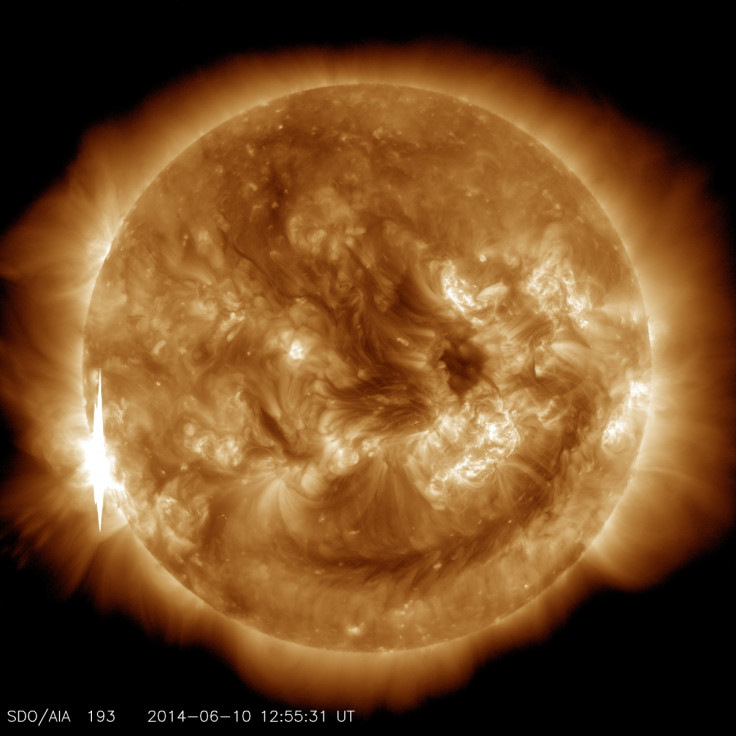Solar Flare Downgraded But Still Can Brew Geomagnetic Storm, Say Experts

Following Wednesday's solar flare, high frequency radio communications were disturbed for an hour as the ultraviolet radiation from the explosion ionised upper layers of the earth's atmosphere.
The coronal mass ejection (CME) from sunspot AR1258 consisting of charged particles travelling towards earth has since been downgraded following a reduction in speed of the cloud from 3750 km/sec to 1400 km/sec.
However, NOAA predicts an 80% chance of geomagnetic storms at the poles as the particles interact with the earth's magnetic field.
It is the combination of the latest flare with a slower flare that erupted on Monday, which could intensify the geomagnetic storm.
The unusual pair of solar flares comes as the sun nears the peak of its 11-year cycle, when sunspots and solar storms become more frequent.
Besides disruption in communications and power grid, the flares do not pose any danger. The solar storm will trigger spectacular auroral displays on Friday night with the northern lights visible for quite some distance south from the poles. The activity could extend to the weekend.
Sunspot AR2158 is almost 10 times the size of earth and is a region of intense magnetic fields providing the energy for the solar flares.
Flares produce a burst of radiation ranging from radio waves to x-rays and gamma-rays.
They are classified according to their x-ray brightness in the wavelength range 1 to 8 Angstroms. The X-class flares are big and can trigger planet-wide radio blackouts and long-lasting radiation storms. M and C class flares are lower in the scale.
Near-Miss in 2012
A recent revelation by NASA says that the earth had a near miss on 23 July, 2012, with a solar flare that could have knocked out all power systems on earth. By sheer chance, the CME was not directed towards earth.
It was the most powerful storm on the sun in over 150 years, but the astronomy community decided not to mention it, says the New York Post.
Physicist Pete Riley, who published a paper titled "On the probability of occurrence of extreme space weather events," calculates the odds of a solar storm strong enough to disrupt our lives in the next 10 years is 12%.
© Copyright IBTimes 2024. All rights reserved.





